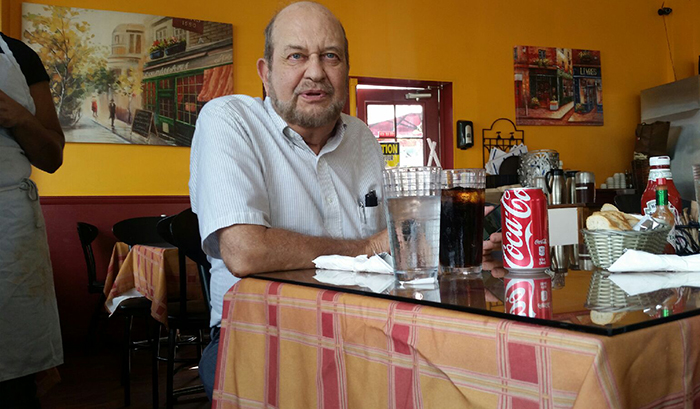To understand the brazen quality of the latest rate increase application from California’s third-largest electric utility, it’s necessary to step back in time, to the scene when wildfires raged across some of the prettiest parts of San Diego County in 2007.
Those fires would kill 13 persons, even more than the notorious natural gas pipeline explosion that came three years later in San Bruno, which ever since has plagued the state’s largest utility, Pacific Gas & Electric. Physical damage from the fire was far more widespread.
Just after noon on Oct. 21, 2007, arcing power lines owned by San Diego Gas & Electric Co. were whipped by dry winds of up to 100 mph, eventually starting a small fire near Ramona, in eastern San Diego County. Known as the Witch Creek fire, by 4 a.m. the next day, this blaze had grown exponentially and reached the San Diego city limits. It combined with two other fires, eventually burning down whole neighborhoods – a total of more than 1,125 residences. More than 197,000 acres burned, but not in rural country like some of last fall’s big fires. This was high-priced residential real estate.
Evacuations were ordered over the almost three weeks the blaze burned, in cities from Oceanside and Encinitas, Del Mar Heights and Carmel Valley, Rancho Santa Fe and the heavily afflicted Rancho Bernardo. There were more. These eventually involved half a million people, the largest evacuation in California history.
Fast forward to San Diego Gas & Electric’s newest rate increase application. Following the examples of Pacific Gas & Electric and Southern California Edison, San Diego Gas & Electric asks the state Public Utilities Commission to have its customers pay 90 percent of its $380 million in fire-related expenses. This would amount to $1.67 per month per customer.
No talk here about the company compensating affected customers for their own fire-related costs, as one might think fair.
The case creates a major test for the PUC, whose new president, Michael Picker, has promised more transparency and adherence to rules preventing private contacts between commissioners, their staff and utility executives during rate cases. Such contacts long have been common, despite violating many rules and regulations.
The 2007 fire, caused primarily by the combination of San Diego Gas & Electric equipment and severe weather conditions, spurred about $4 billion in claims, many not covered by insurance.
San Diego Gas & Electric, obligated to serve fire-prone areas and pay damages linked to power line problems whether or not negligence was involved, says having customers pay 90 percent of its costs is consistent with another state decision on a hazardous waste cleanup.
This does not change the fact that asking customers – many of them victims of the fire – to pay the vast bulk of the bills is like someone helping cause a car accident that injures another party and then expecting that person to pay most of the damage expense.
This would never fly in a private negotiation, but we are talking about a state commission with decades of experience favoring utility companies over their customers.
San Diego Gas & Electric SDG&E doesn’t say this, but it has plainly seen that Southern California Edison won a deal having customers foot about 70 percent of expenses linked to the shutdown of the San Onofre Nuclear Generating Station, caused mostly by an Edison blunder. It has seen Pacific Gas & Electric get sweetheart terms on the penalties assessed against it for San Bruno. San Diego Gas & Electric has seen the thus-far lenient treatment the PUC has given the Southern California Gas Co. (with which it shares a parent company – Sempra Energy) in the massive ongoing methane gas leak near Porter Ranch.
If Mr. Picker is serious about changing the culture of the commission, as he claimed in his state Senate confirmation hearings, the Sam Diego Gas & Electric rate case is a big chance to make a statement.
Bottom line: If San Diego Gas & Electric ends up paying only about 10 percent of its expenses from a hugely traumatic fire caused in large part by its equipment, the PUC will be saying it’s business as usual. The companies ask for money and the commission reaches for the wallets of customers. Only if the proposal is cut by much more than half will there be any reason to think there’s been any change at this steadfastly corrupt commission.
Mr. Elias may be contacted at tdelias@aol.com. His book, “The Burzynski Breakthrough, The Most Promising Cancer Treatment and the Government’s Campaign to Squelch It,” is now available in a soft cover fourth edition. For more Elias columns, visit www.californiafocus.net

